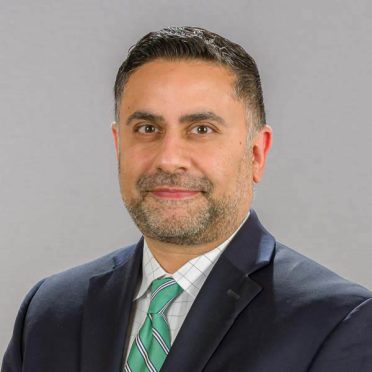Imagine fearing your mental health diagnosis could lead to a losing your job or custody of your children. Would you still seek care or keep your concerns to yourself, possibly leading to a crisis?
Britney Spears’ sharing her experience is a recent example of how someone hospitalized for a mental health crisis was put under a conservatorship for more than a decade, a situation she alleges led to abusive control of her living conditions, finances, custody of her children and reproductive rights.
A recent Institute of Living Grand Rounds, “Structural Stigma and Coercive Mental Health Care,” by Jamie Livingston, PhD, examined how mental health care can be coercive and structural stigma may impact clients and their recovery.
“I was hoping that Dr. Jamie Livingston’s presentation would help catalyze a conversation about coercive practices in mental healthcare and how commonplace they have become,” said Dr. Javeed Sukhera, chair of psychiatry at the IOL and chief of the Department of Psychiatry at Hartford Hospital. “As we honor the history of the IOL and look forward to the future, we must consider how to advance a person-centered paradigm. Having a courageous and candid conversation about the coercive underpinnings of psychiatric care is necessary and timely.”
Dr. Sukhera said the Britney Spears case is an example of how someone’s history of mental health challenges can lead to loss of autonomy and control.
“The case has certainly raised awareness about court-ordered control, and sparked important conversations,” he said.
Dr. Livingston, an associate professor in the Department of Criminology at Saint Mary’s University in Halifax, Nova Scotia, is a criminologist who studies issues of social inclusion and social justice for people with mental health and substance use disorders, focusing on those who are involved with the criminal justice system.
Dr. Livingston said the Spears case is an example of court-ordered surveillance, control and coercion. “It is the type of case that could deter others from disclosing their mental health issues and seeking help,” he said.
He encourages a more client-centered philosophy of care, more centered on recovery and equity.
“Stigma can manifest at group level — large social groups can endorse negative stereotypes, exclude and marginalize others. This is how theories are pushed that people with mental health issues are dangerous, which leads to regressive reform, punitive policies rather than proactive reforms, such as making treatment more readily available,” Dr. Livingston said.
His discussion also touched on internalized stigma, where clients may adopt negative feelings about themselves, leading them to withdraw from social situations and possibly to conceal their health issues.
“Reduced self-esteem can lead to decreased quality of life and increased levels of hopelessness and fear that they will be treated as ‘crazy’ or ‘weak,’” Dr. Livingston said.
He encouraged providers to think about structural stigma, how laws and policies permit unfair and unjust treatment that can impact housing, education, employment, healthcare and even immigration policies.
“Lives could be significantly improved if we make a concerted effort to address structural stigma,” he said.



